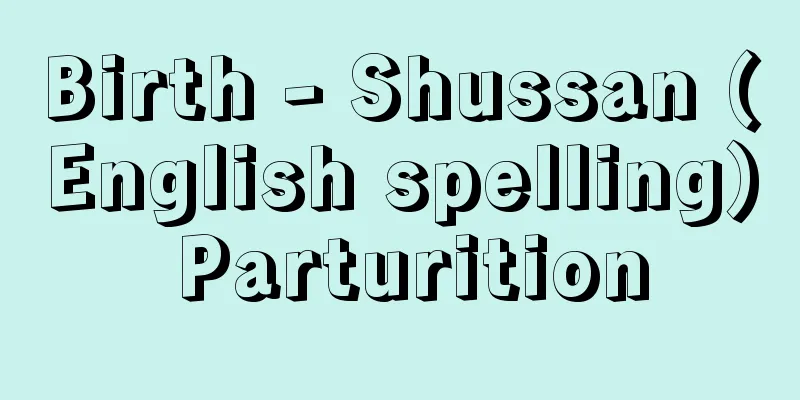Cutting edge - Cutting edge

|
A haiku term. A word that has the function of expressing a strong and decisive admiration in a verse. It is similar to "ya" in "Arashiumi ya Sado ni yoritafu Amanohawa" (Basho), "kana" in "Fuji hitotsu uchi mi wo natte shite wakana" (Buson), and "keri" in "daiko hiru daikon de doshi ke teru ke keri" (Issa). These three are the most commonly used kireji, but other words such as "tsu", "nu", "zu", and "ran" are also considered kireji. There must be one kireji in a verse, but there should not be more than two. However, there is a view that any word can be a kireji if it expresses a feeling of decisive admiration, and not just a specific word. It is said that "(kaze)" in "Akaaka to hi tsurenaku mo aki no kaze" (Basho) is a kireji. However, it is better to think of it as a break in the verse rather than a kireji. The break in a verse takes the place of a kireji. A kireji makes a verse clearly independent and gives the verse a sense of depth. Kireji are particularly effective for short poetic forms such as haiku. In renga and haikai, the presence or absence of a kireji distinguishes between hokku and tsukeku. In renga from the Muromachi period, 18 characters were considered kireji in the hokku of renga: "kana," "keri," "mogana," "shi," "zo," "ka," "yo," "se," "ya," "re," "tsu," "nu," "he," "zu," "ikana," "ji," "ke," and "ran." However, Basho, who lived in the Edo period, considered the content to be the main focus and said that all characters could be kireji when used as kireji. [Yamashita Kazumi] "A Study of Cutting Characters" by Makoto Asano (1962, Ohfusha) Source: Shogakukan Encyclopedia Nipponica About Encyclopedia Nipponica Information | Legend |
|
俳句用語。一句のなかで特別に強くいいきって詠嘆する働きをもつことば。「荒海や佐渡に横たふ天の川」(芭蕉(ばしょう))の「や」、「富士ひとつうづみ残して若葉かな」(蕪村(ぶそん))の「かな」、「大根(だいこ)引き大根で道を教へけり」(一茶(いっさ))の「けり」の類。この三つがもっともよく用いられる切字だが、ほかに「つ」「ぬ」「ず」「らん」なども切字とされる。切字は一句の中に一つなければならないが、二つ以上あってはいけないとされている。ただし、そのような特定の語だけが切字でなく、いいきって詠嘆する気分が表されていれば、どんな語でも切字となるという考えがある。「あかあかと日はつれなくも秋の風」(芭蕉)の「(カ)ゼ」が切字だというのである。しかしそれは切字というより、そこに句切れがあると考えるほうがよい。句切れが切字のかわりをするわけである。切字によって一句ははっきりと独立し、内容に深みが感じられることになる。俳句のような短い詩型にとって、切字はとくに有効である。また、連歌、俳諧(はいかい)においては、切字の有無によって発句と付句が区別される。室町時代の連歌の発句では、「かな」「けり」「もがな」「し」「ぞ」「か」「よ」「せ」「や」「れ」「つ」「ぬ」「へ」「ず」「いかに」「じ」「け」「らん」の18が切字とされたが、江戸時代の芭蕉は、内容本位に考えて、切字に用いるときはすべての文字が切字になりうるといっている。 [山下一海] 『浅野信著『切字の研究』(1962・桜楓社)』 出典 小学館 日本大百科全書(ニッポニカ)日本大百科全書(ニッポニカ)について 情報 | 凡例 |
>>: Kireyevsky Brothers - Kireyevsky Siblings
Recommend
Ariel (English spelling)
(1) The name given to Jerusalem in the Book of Isa...
Hexane
C 6 H 14 (86.18). CH 3 (CH 2 ) 4 CH 3 . Paraffin ...
Shen Wan San (English spelling) Shěn Wàn sān
A wealthy Chinese man in the late Yuan and early M...
Wakkanai [city] - Wakkanai
Located in northern Hokkaido, across the Soya Stra...
Fort Schrittspartei
...This developed into a conflict over the nature...
Whale grass - Whale grass
A biennial herb of the Brassicaceae family (APG c...
Coquimbo (English spelling)
A port city in central Chile facing the Pacific Oc...
Karakalpakstan [Autonomous Republic] (English spelling)
An autonomous republic in Central Asia within the ...
Saransk
...The area is 26,200 km2, and the population is ...
Prohibition law - Kinkaiho
… There were several basic forms of monopoly in C...
Purification - Kiyome
1. Remove dirt and make clean. "The match in ...
Rathke's pouch (English)
…the adenohypophysis is composed of the neurohypo...
Special purpose tax/ordinary tax - mokutekizei futsuzei
Tax revenues are used for the provision of various...
Vigan (English spelling)
A city on the western coast of northern Luzon in t...
The Narrow Road to the Deep North - The Narrow Road to the Deep North
Basho's Haikai Travelogue. On March 27, 1689 ...









